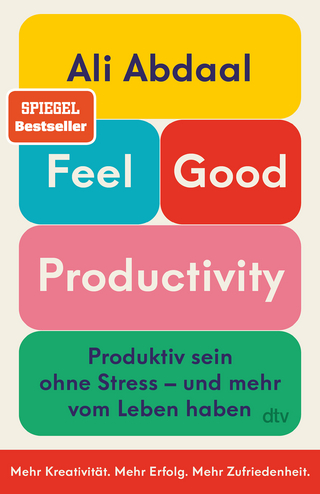
Ion Channels
Kluwer Academic/Plenum Publishers (Verlag)
978-0-306-44166-0 (ISBN)
In the past few years, the scientific community has witnessed significant progress in the study of ion channels. Technological advancement in biophysics, molecular biology, and immunology has been greatly ac celerated, making it possible to conduct experiments which were deemed very difficult if not impossible in the past. For example, patch-clamp techniques can now be used to measure ionic currents generated by almost every type of cell, thereby allowing us to analyze whole-cell and single channel events. It is now possible to incorporate purified ion channel components into lipid bilayers to reconstitute an "excitable membrane." Gene cloning and monoclonal antibody techniques provide us with new approaches to the study of the molecular structure of ion channels. A variety of chemicals have now been found to interact with ion channels. One of the classical examples is represented by tetrodotoxin, a puffer fish poison, which was shown in the early 1960s to block the voltage-activated sodium channel in a highly specific and potent manner.
1 Developmental Regulation of Potassium Channels and the Impact on Neuronal Differentiation.- 1. Introduction.- 2. Whole-Cell Currents.- 3. Modeling.- 4. Single-Channel Currents.- 5. Regulation: Critical Periods.- 6. Calcium-Dependent Action Potentials and Their Roles.- 7. Potassium Channel Genes.- 8. Conclusion.- 9. References.- 2 Voltage-Gated Calcium Channels in Adult Hippocampal Neurons.- 1. Introduction.- 2. Methods.- 3. Results.- 4. Discussion.- 5. References.- 3 Amino Acid Receptor-Mediated Synaptic Currents in the Ca1 Region of the Hippocampus.- 1. Introduction.- 2. Excitatory Postsynaptic Currents.- 3. Inhibitory Postsynaptic Currents.- 4. Concluding Remarks.- 5. References.- 4 Intracellular Regulation of GABAA-Receptor Function.- 1. Introduction.- 2. Phosphorylation.- 3. Second Messenger Systems.- 4. Experimental Aspects.- 5. Discussion.- 6. References.- 5 Axon Terminal Hyperexcitability Seen in Epileptogenesis in Vitro.- 1. Introduction.- 2. Axon Terminal Backfiring in an in Vitro Seizure Model.- 3. Significance of Axon Terminal Hyperexcitability for Epileptiform Activity.- 4. References.- 6 Neural Correlates of Memory Storage: The Role of Ion Channels.- 1. Introduction.- 2. Ion Conductances in Hermissenda B Photoreceptors.- 3. Reduction of Potassium Currents as a Memory Trace in Hermissenda.- 4. Mammalian Brain Correlates of Associative Memory.- 5. Calcium-Mediated Phosphorylation of Ion Channels and Memory.- 6. The Role of Small G Proteins.- 7. Long-Term Memory and Structural Modification.- 8. References.- 7 Functional Regulation of Nicotinic Acetylcholine Receptor Channels in Muscle.- 1. Introduction.- 2. The Nicotinic Acetylcholine Receptor.- 3. Regulation by Protein Kinase C.- 4. Regulation by cAMP-Dependent Protein Kinase.- 5. Regulation by Tyrosine-Specific Protein Kinase.- 6. Regulation by Neurotransmitters and Peptides.- 7. Role of Glycosylation.- 8. Muscle nAChR Expressed in Xenopus Oocytes.- 9. Concluding Remarks.- 10. References.- 8 Rapid Activation and Desensitization of Transmitter-Liganded Receptor Channels by Pulses of Agonists.- 1. Introduction.- 2. Methods.- 3. Results.- 4. Discussion and Conclusions.- 5. References.- 9 Neurogenetic Studies of Ion Channels in Drosophila.- 1. Introduction.- 2. Sodium Channels.- 3. Potassium Channels.- 4. Conclusions.- 5. References.- 10 Kinetic Properties and Regulation of GABAA Receptor Channels.- 1. Introduction.- 2. Gating of GABAA Receptor Channels.- 3. Regulation of GABAA Receptor Channels.- 4. Summary.- 5. References.
| Erscheint lt. Verlag | 31.10.1992 |
|---|---|
| Reihe/Serie | Ion Channels ; 3 |
| Zusatzinfo | XV, 352 p. |
| Verlagsort | New York |
| Sprache | englisch |
| Maße | 155 x 235 mm |
| Themenwelt | Naturwissenschaften ► Biologie ► Humanbiologie |
| Naturwissenschaften ► Biologie ► Zellbiologie | |
| Naturwissenschaften ► Biologie ► Zoologie | |
| Naturwissenschaften ► Physik / Astronomie ► Angewandte Physik | |
| ISBN-10 | 0-306-44166-7 / 0306441667 |
| ISBN-13 | 978-0-306-44166-0 / 9780306441660 |
| Zustand | Neuware |
| Haben Sie eine Frage zum Produkt? |
aus dem Bereich


